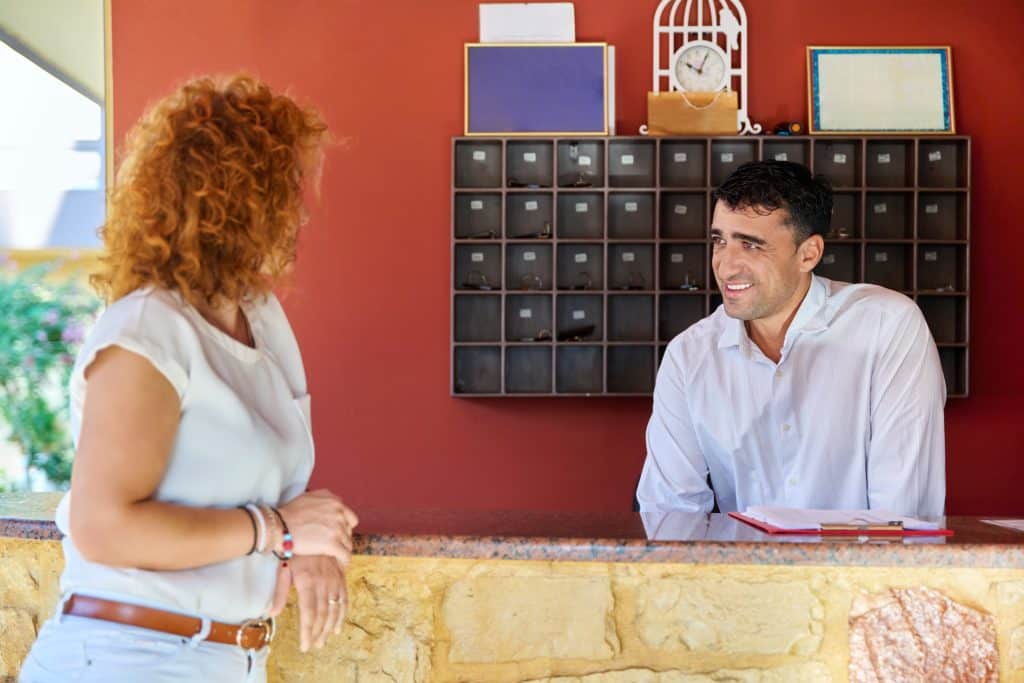Small talk is a social skill that many people struggle with, but it can be an important tool for building relationships, making connections, and networking. Whether you’re at a social event, networking function, or meeting new people, knowing how to engage in small talk can make all the difference in creating a positive and memorable impression. This article will explore some tips and strategies to help you master the art of small talk, so you can feel confident and comfortable in any social situation.
Contents
- 1 How Mastering Small Talk Can Change Your Life
- 2 How to Master The Art Of Small Talk
- 3 Start With A Positive Attitude
- 4 Listen Actively
- 5 Keep It Light
- 6 Use Open-Ended Questions
- 7 Find Common Ground
- 8 Be Mindful Of Body Language
- 9 Practice, Practice, Practice
- 10 Use These Tips To Master The Art Of Small Talk!
How Mastering Small Talk Can Change Your Life

Small talk may seem like a meaningless conversation that fills the void of awkward silence, but in reality, mastering small talk can change your life. Engaging in small talk can open doors and create opportunities you may never have expected. It can also increase your confidence, allowing you to navigate social situations easily.
Learning how to start and sustain a conversation with anyone can be valuable in your personal and professional life. It can help you build lasting connections and establish valuable relationships. By mastering small talk, you may find yourself more successful, fulfilled, and engaged in the world around you. So embrace the power of small talk and watch your life change for the better.
How to Master The Art Of Small Talk
It’s no secret that small talk can be intimidating, but the key to success is practice and preparation. Here are a few tips and tricks to help you master the art of small talk:
Start With A Positive Attitude

Small talk is often seen as a necessary evil of social interaction, something to be endured rather than enjoyed. However, approaching small talk with a positive attitude can make all the difference in your ability to engage with others. It will likely be if you go into a conversation expecting it to be boring or awkward. On the other hand, if you approach small talk with an open mind and a willingness to learn something new, you may be surprised by how enjoyable it can be.
One way to shift your attitude towards small talk is to reframe it as an opportunity to connect with others. Instead of seeing small talk as an inconvenience, view it as a chance to learn about someone else’s interests, experiences, and perspectives. By approaching small talk with a positive mindset, you’ll be more likely to engage in meaningful conversations that leave a lasting impression.
Listen Actively

Active listening is crucial to effective communication, especially regarding small talk. When you’re engaged in small talk, it’s essential to show the other person that you’re interested in what they have to say. This can be accomplished through active listening techniques such as maintaining eye contact, nodding, and asking follow-up questions.
When someone is speaking, avoid interrupting or finishing their sentences. Instead, allow them to speak uninterrupted, and then respond with your thoughts or questions. This demonstrates that you are interested in what they say, and it helps build rapport between you.
Active listening is about paying attention to what someone is saying and how they are saying it. Pay attention to nonverbal cues such as body language and tone of voice. This can help you pick up on subtle nuances in the conversation and respond appropriately.
Keep It Light

Small talk is a better time to delve into heavy or controversial topics. Instead, focus on light and neutral topics that are easy to discuss. Some examples of appropriate small talk topics include the weather, hobbies, travel, and current events.
When selecting a topic for small talk, it’s important to consider the context of the conversation. For example, at a business conference, focus on industry-related topics. If you’re at a social event, you might want to discuss shared interests such as music or sports.
It’s also important to be mindful of the other person’s comfort level with certain topics. If you sense that they are uncomfortable with a particular subject, it’s best to steer the conversation differently.
Use Open-Ended Questions

One of the keys to successful small talk is to ask open-ended questions. These questions require more than a simple yes or no answer, and they encourage the other person to elaborate on their thoughts and experiences. Examples of open-ended questions include “What do you enjoy doing in your free time?” or “What was your favorite vacation?”
Open-ended questions are a great way to keep the conversation flowing and to learn more about the other person. They also demonstrate that you are interested in what they say, which can help build rapport and establish a connection.
Find Common Ground

Finding common ground is an important part of successful small talk. By identifying shared interests or experiences, you can create a more comfortable atmosphere and establish a connection with the other person.
One way to find common ground is to ask questions about the other person’s background or experiences. For example, you might ask about their hometown, education, or career. This helps establish a common starting point for the conversation.
Another way to find common ground is to look for shared interests or hobbies. For example, if you enjoy hiking, ask about their favorite local trails or share your experiences. By finding common ground, you can create a more relaxed and enjoyable conversation that is more likely to lead to a meaningful connection.
Be Mindful Of Body Language

Body language is a critical component of small talk. It’s essential to be mindful of your body language and to pay attention to the other person’s body language.
When engaging in small talk, it’s important to maintain good eye contact with the other person. This demonstrates that you are interested in what they have to say and that you are fully engaged in the conversation. You should also use appropriate facial expressions, such as smiling or nodding, to show that you are listening and interested in the conversation.
Another important aspect of body language is posture. Maintaining an open and relaxed posture can create a more comfortable and inviting atmosphere for small talk. Avoid crossing your arms or legs, as this can create a closed-off and defensive posture that may be off-putting to the other person.
Practice, Practice, Practice

As with any skill, practice is essential to mastering the art of small talk. The more you practice, the more comfortable and confident you will become. Look for opportunities to engage in small talk, whether at work, social events, or even in line at the grocery store.
It’s also helpful to seek feedback from others. Ask a trusted friend or colleague for their thoughts on your small talk skills, and be open to constructive criticism. This can help you identify areas for improvement and refine your approach to small talk.
Use These Tips To Master The Art Of Small Talk!
Mastering the art of small talk is a valuable skill that can help you build relationships, make connections, and expand your network. By approaching small talk with a positive attitude, listening actively, keeping the conversation light, using open-ended questions, finding common ground, being mindful of body language, and practicing regularly, you can become a master of small talk in no time. Remember, small talk is an opportunity to connect with others and learn something new, so approach it with curiosity, enthusiasm, and an open mind.


